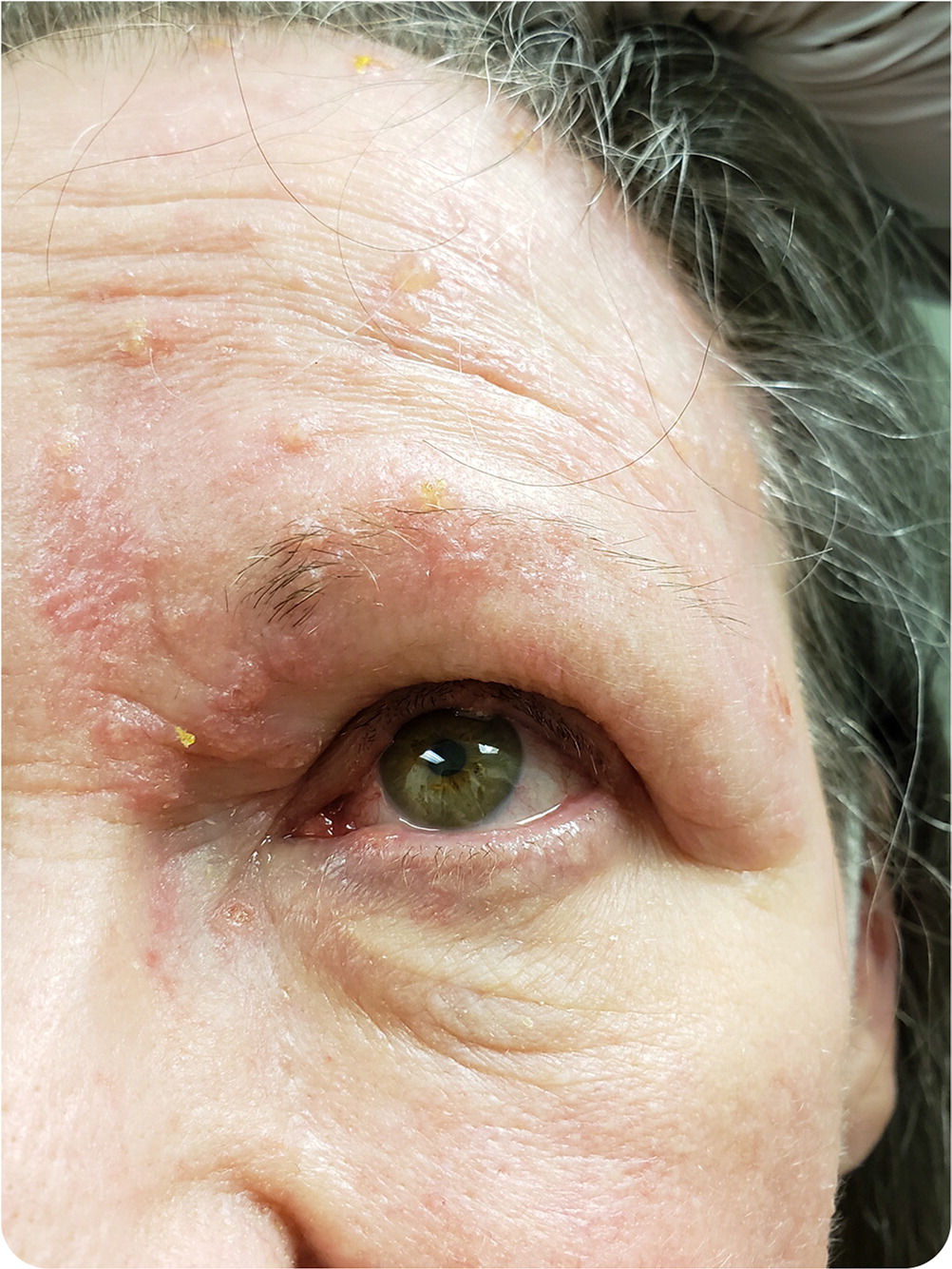
Blurry Vision and Facial Rash
Am Fam Physician. 2023;108(3):303-304
Author disclosure: No relevant financial relationships.
An otherwise healthy 69-year-old woman with no significant medical history presented with a facial rash that had appeared three days earlier. The rash had progressed to involve her left eyelid, and she had blurred vision.
Physical examination showed vesicles on erythematous bases around her left eye (Figure 1). Vesicles were present on the upper and lower eyelids, and redness of the eyes was noted. Other eye examination findings were normal. There was no purulent discharge, vesicles, or ulcers appreciated in the cornea. Findings on cranial nerve examination were unremarkable.

Question
Based on the patient's history and physical examination findings, which one of the following is the most appropriate next step?
A. Start oral antiviral monotherapy.
B. Admit for intravenous antiviral therapy.
C. Start prednisone and oral antiviral
D. Refer urgently to ophthalmology.
Discussion
The answer is D: refer urgently to ophthalmology to evaluate for herpes zoster ophthalmicus. Herpes zoster (shingles) is caused by reactivation of the varicella zoster virus. Herpes zoster ophthalmicus involves the ophthalmic division of the trigeminal nerve and can lead to severe vision-threatening complications.1 About 10% of the approximately 1 million herpes zoster cases per year present as herpes zoster ophthalmicus.2
Subscribe
From $165- Immediate, unlimited access to all AFP content
- More than 130 CME credits/year
- AAFP app access
- Print delivery available
Issue Access
$59.95- Immediate, unlimited access to this issue's content
- CME credits
- AAFP app access
- Print delivery available

